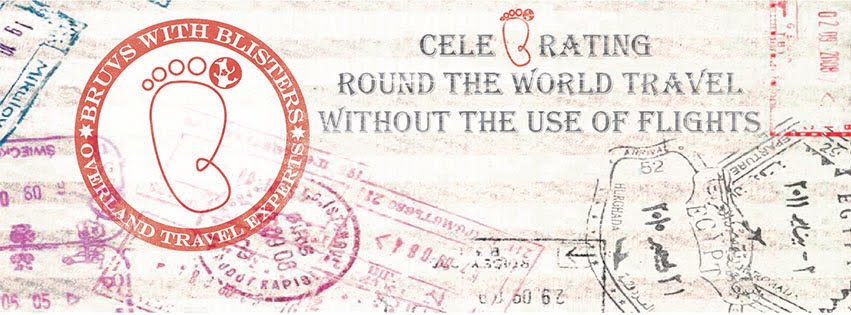 |
| View from Kalbarri National Park towards the Indian Ocean |
Wednesday 10th June 2015:
We were awoken at around 5:30am to the
sound of a disgruntled park ranger talking sternly to Dave and Bastiaan. As
suspected our roadside camping spot was within the national park boundaries and
we weren’t supposed to be there. Luckily the lads jumped into the naïve tourist
routine and thankfully the officer let us off with a warning which meant we
avoided an on the spot fine if we hit the road within 30 minutes. This suited
us fine as we were close to a few sights of interest and then had plenty of
time to reach a campsite relatively close to Kalbarri National Park to the
south.
 |
| Eagles Bluff |
The first of the sights south of Denham is
a lookout known as “Eagles Bluff” where the guide said you can see dugongs,
sharks and whales from the from the high cliff face. Sadly for us there were no creatures to spot other than the odd sea bird but with a great panoramic view along the peninsula it still worth a visit.
.
Heading south just before the boundaries of
the protected zone is “Shell Beach” which as you may guess is a beach with
plenty of crustacean carcasses. This is a much nicer spot and actually offers a
beach scene unique to the area. Now all Western Australia needs is a beach full
of pebbles and it may be able to recreate a typical British seaside scene.
A few kilometres away from shell beach is
“Hamelin Pool” which is home to one of the oldest creatures on the planet. No
not Bruce Forsythe, they are in fact Stromatolites. Layered rock made up of a
colony of single celled cyanobacteria that use a sticky surface to trap
sediment. The sticky solution reacts with calcium carbonate to form the
limestone home. To be honest they are interesting if you consider their
evolutionary importance but to be honest after five minutes of staring at a
group of rocks even the most enthusiastic visitor gets bored and moves on but
hey it’s another creature to tick off.
 |
| Stromatolites in Hamelin's Pool |
The rest of the day was spent on the open
road as we covered the few hundred kilometres south to our night stop at Galena
Bridge free camp site. It was a nice spot by the river and had plenty of
deadwood to make a cosy camp fire.
Thursday 11th June 2015
Another early start this time on our own
accord as we hastily closed the 100km gap between us and yet another National
Park, Kalbarri. Like its larger WA cousin Karijini, Kalbarri boasts stunning
rust covered canyons and crystal clear rivers all within spitting distance of
the coast and a town of the same name.
Ross Graham lookout offers great views of
the Murchison River as it cuts through the landscape to form a steep rugged
gorge. Unlike Karijini this was a case of passing through and grabbing a few
photographs as we went. Sadly we had to make up for lost time to reach Perth
but in all honesty the fly problem was a real factor. There are other lookout
spots, abseiling tours and river trails to the north but you need a day or two
to make the most of them.
If you visit this national park I advise
you to wear some kind of face net. It makes you look like a bee keeper but it
better than having to eat your way through the flies like we did.
 |
| Kalbarri: canyons, stunning coastline and waving whales |
Still peckish following our crunchy fly
starter we stopped for lunch in the coastal town of Kalbarri and made use of
the petrol station to restock on the dwindling fuel supply. It a sleepy place
populated by an ageing community of retirees and a steady flow of grey nomads
but is rumoured to be a good place for windsurfing and sea fishing. Heading
south are a few more lookout points along the rugged coastline. Red Bluff and
Island Rock were our favourites as we managed to grab a few brief glimpses of a
humpback whale as it hugged the coast north following the plankton blooms. A
rare sight for most and one I was finally thankful to tick off after the lack
of humpback sightings north in Exmouth.
It certainly blew the rock sighting out of
the water.


No comments:
Post a Comment